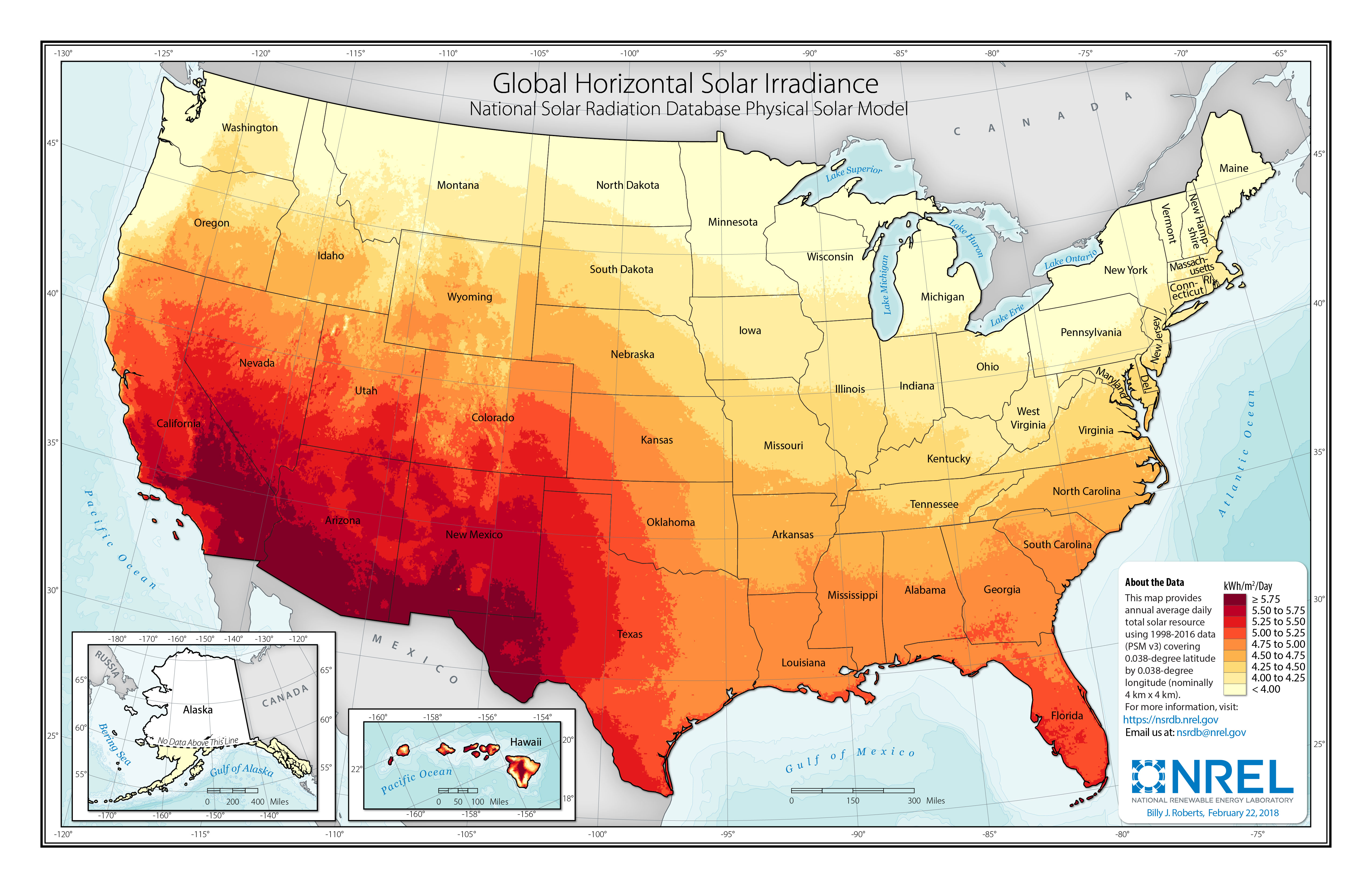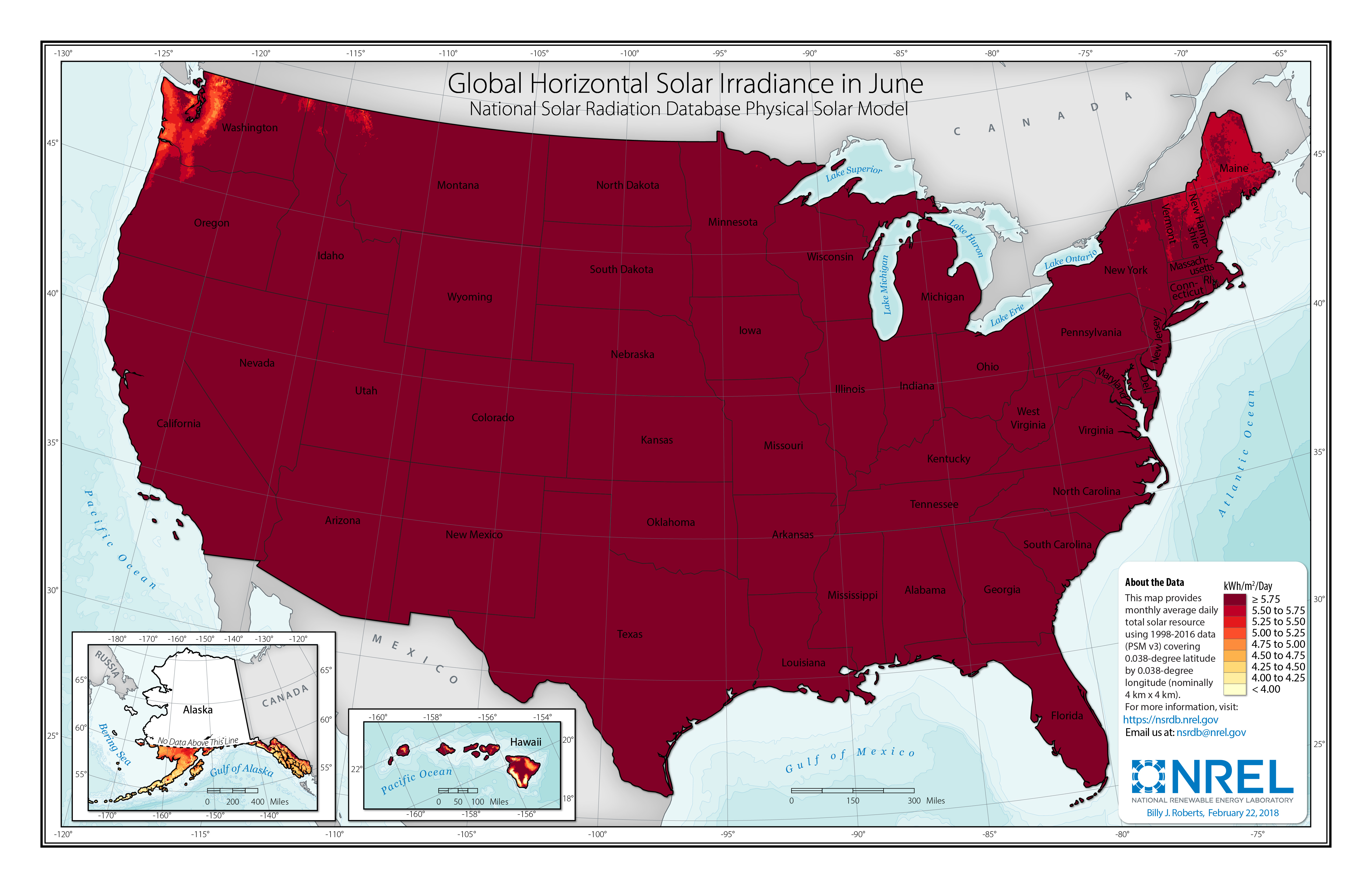"Is solar right for me?" That's a question many homeowners have found themselves asking, especially since solar panels lower electricity bills, open the door to rebates and incentives, and add to the value of a home.
If you're asking yourself how many peak sun hours solar panels need, and how to estimate the hours based on the area you live in, you've come to the right place.
Get A Free Solar Quote NowWhat Is a Peak Sun Hour?
Not to be confused with hours of daylight, "peak sun hours," in reference to solar panels, refers to both the amount of time and intensity of the sunlight that your panels receive. An hour during which the intensity of the sunlight is 1,000 watts per square meter or greater is a peak sun hour.
This measure is more about the intensity of the light rather than the overall time the panel is exposed to sunlight. Time of day, the geographical location of your home, the season, and even the angle of the solar panels can all play into how many peak sun hours your renewable energy system has access to.
How Many Hours Do Solar Panels Need?
To get the most out of your solar panel system, they need direct sunlight. Many factors are taken into account when determining how suitable your home is for solar panels, including the angle they can be installed and how many obstructions there are, like overhanging foliage or trees.
Let's say your solar panels get eight hours of sunlight a day. Not all of those are peak hours. So what's the recommended minimum amount of hours that your panels need every day? Around four or five. While four hours a day may not be able to cover all of your electricity costs, it will certainly be enough to make a significant dent in your electricity bill.
Remember: Your system can still absorb sunlight on cloudy days, so don't dismiss the possibility of panels because you live in an area that frequently deals with overcast weather!
Estimate Peak Hours
Numerous resources are available to help you calculate the peak sun hours in your area, like this map from the National Renewable Energy Laboratory that provides insights as to annual averages:

To highlight how seasons impact those numbers, take a look at this map that shows solar irradiance averages during June.

Do you live in a state that gets four or fewer hours of peak sun hours during the year, but you're still interested in a renewable energy system? As solar panels cut electricity costs, have tax benefits, and add to the value of your home, why wouldn't you be interested in them?
If you don't have access to four or five peak sun hours, there are still options for you! The solar company installing your system will be able to recommend high-efficiency panels that have been specifically designed to generate more from less.
More Exact Calculations
If you're very concerned about the amount of peak sun hours that your panels will receive, an irradiance meter can provide some peace of mind, as it will be able to give you a more accurate reading. Many can provide information about light intensity and an optimal solar panel angle.
Interested in Panels? Get the Best Price
Homeowners who shop around for a solar installer typically save more than those who take the first offer that comes along. A big solar company doesn't necessarily mean the best price. With help from EnergyBillCruncher, it's easy to connect with reputable solar installers and compare offers. Since there is no obligation to opt for renewable energy, why not explore the many offers that are available to you?
Panels Are More Efficient Than You May Think
There is no hard-and-fast rule for how many peak sun hours your solar panels will need, as the appliances you use and the amount of power your home requires varies. There are only guidelines that are based on numerous factors, like seasons, geography, and the angle of the panels. For a more precise determination, a solar irradiance meter can be very helpful.
Related
Panel tech: the breakthroughs
The key takeaway is that panels don't need seven hours of direct sunlight to help you save on your electricity bill. Through less-than-ideal weather and minimal peak sun hours, your panels may still be able to produce enough electricity to power your entire home. Learn more by speaking with a solar company, and be sure to ask about the various solar incentives you can put to use that help you save even more!
Get A Free Solar Quote Now




